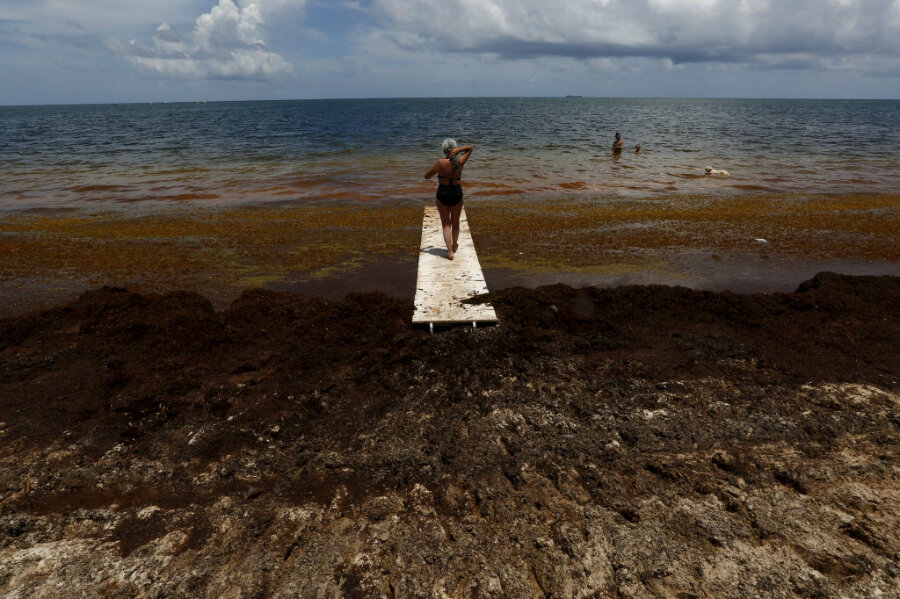Caribbean nations struggling with foul-smelling seaweed
Loading...
Putrid-smelling seaweed has been piling up on Caribbean beaches for months, straining the tourist-dependent region.
From Florida to South America, the seaweed has killed wildlife tangled in its thick vines, repelled tourists seeking pristine beaches, imperiled the livelihoods of fishermen, and snarled power plants that rely on the churn of the sea.
On one Mexican beach, the piles amassed were four feet high, causing some locals to flee their homes, The Washington Post reports. Tobago’s legislature declared a natural disaster last month, and Mexico’s military has been called in to begin a lengthy clean-up process.
Experts believe the seaweed, called sargassum, has bloomed because of changing weather conditions associated with global warming. As sargassum breaks down, it emanates an odor akin to rotting eggs.
"It's a dirty horrible brown lace that just washes ashore," said Noorani Azeez, CEO of the Saint Lucia Hotel and Tourism Association, to Reuters. "The foul stench of the seaweed is really an inhibitor to going (to the beach) with your family."
Chuanmin Hu, a professor of optical oceanography at the University of South Florida, told the Post that satellite images in July show sargassum having spread more than 12,300 miles.
Many are trying to find ways to put the seaweed to good use. The University of the West Indies is seeking ideas, and so far suggestions that may create jobs and business opportunities have been pouring in.
One solar company told Reuters it has created a whole new business to stockpile the seaweed by using a rake pulled by horses to collect it. Other companies have suggested using the seaweed for fertilizer.
Older devices are also now being used for novel purposes. Caribbean nations are increasingly installing barriers normally called out for oil spills to reign in the seaweed and keep it off beaches.
Mexico, which pulls in billions from tourists visiting its beaches, hired 5,000 laborers to remove the seaweed over more than 100 miles of sand, the Post said.
“Beaches are what we sell to the whole world and what we depend on, directly or indirectly, for all our income,” said José Eduardo Mariscal de la Selva, the director general of Cancún's maritime department.
More permanent solutions are being sought out while no one seems certain how long sargassum continues to arrive. The algae normally found in the north Atlantic Ocean was first spotted in the region around 2010.
A report by the University of Southern Mississippi Gulf Coast Research Laboratory notes similar invasions occurred in 2011 and began to increase again last year. Researchers are trying to develop an early-warning system for sargassum.
Jim Franks, a senior research scientist from the institute, said warmer oceans caused by climate change could have sparked the recent incursion by creating new blooms in the Atlantic, according to Reuters.
"If we can predict and at least give some sort of indication of what the future holds, then these island countries can begin to develop some response strategies based on science rather than just guesswork," He said. "We think that would be very helpful."







